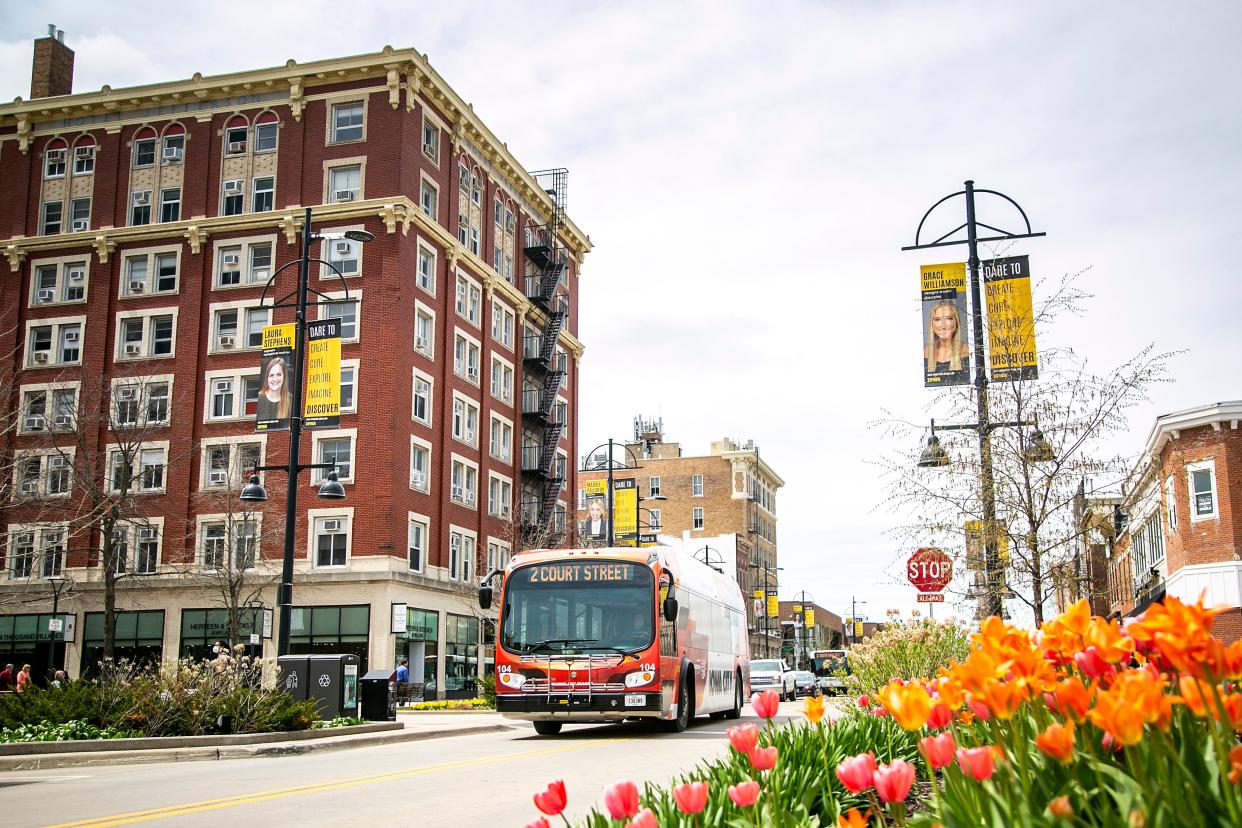Iowa City Transit ridership eclipses 1.5 million in first year of fare-free program

More than 1.5 million individual riders took advantage of Iowa City's fare-free transit system in the last fiscal year.
Ridership increased nearly 43% over the year prior, with more than 450,000 additional riders choosing to take public transportation from July 1, 2023, to June 30, 2024.
Ridership was already on the rise as the public returned to in-person classes and work after the COVID-19 pandemic, though recent data represents a much larger increase than the two years prior.
The boost puts ridership around the same pace of 2017 and about half a million riders short of the 2010 peak ridership of 1.94 million.
Iowa City's ride-fare system is aimed at decreasing carbon emissions and increasing transportation equity.
More: Here's everything you need to know about the new school year in Iowa City
From December: Iowa City’s fare-free transit program boasts 44% ridership increase in first 3 months
Iowa City is ranked among the nation's top markets
Iowa City ranks as the 16th-highest Urbanized Area with the Most Transit Travel in the American Public Transit Association rankings, according to 2021 data. Iowa City Transportation director Darian Nagle-Gamm said she believes Iowa City will continue to climb, joining fourth-ranked Ames and large metros like New York, San Francisco and Chicago.
Iowa City Transit's most popular routes were the Oakcrest, with about 20,000 average monthly riders in Fiscal 2024, the South Iowa City route, drawing nearly 17,000 monthly riders, and the West Iowa City route, which garnered 15,700 monthly riders.
More: Iowa City's plate reading technology approved in parking ramps. What to know:
Will fare-free stick around?
Iowa City leaders want to stick with the fare-free system.
The city council offered additional guidance during its regular meeting Tuesday. They discussed improvements like adding bus shelter space and building toward a regional transit system.
Mayor Bruce Teague praised the fare-free transit for putting "money back in the pockets of those who use the system." Councilor Andrew Dunn said he has friends in the community who have almost "completely transitioned" from driving to riding the bus.
More: Suspect in Marion quadruple murder deemed competent to stand trial in April 2025

How will the city continue to fund this program?
The first two years of Iowa City's fare-free system are part of a pilot program, using money from the city's American Rescue Plan Act fund.
Moving forward, the city plans to fuel public transportation through revenue from the federal government. In Fiscal 2024, that total was about $2.9 million.
The city's parking ramp and meter fare increases, which went into effect on July 1, are also meant to help bridge a funding gap. Approximately $1.5 million of the city's generated revenue is expected to go toward fare-free.
Nagle-Gamm said that leaves Iowa City Transit with a $1 million shortfall, which could potentially be covered by a Fiscal 2026 utility tax.
"The combination of all of those is going to support the transit system without a fare," Nagle-Gamm said.
Climate goals distant, but in sight
One of the goals of fare-free service was to deliver on the city's climate goals, reducing vehicle use in Iowa City and advancing the city's climate goals, Nagle-Gamm told the Iowa City City Council.
The city set a lofty climate goal, committing to a 40% reduction in carbon emissions by 2030. To reach that goal, Nagle-Gamm said, Iowa City Transit would still need to draw an additional 400,000 rides per year, bringing the total closer to 1.9 million.
Still, the ridership increase amounts to a reduction of roughly 31,000 metric tons of carbon, equivalent to the consumption of about 3,800 homes or taking roughly 6,800 vehicles off the road, Nagle-Gamm said.
The uptick in use has saved Iowa City residents roughly $1.3 million.
More: Photos: University of Iowa students arrive on campus
Ryan Hansen covers local government and crime for the Press-Citizen. He can be reached at [email protected] or on X, formerly known as Twitter, @ryanhansen01.
This article originally appeared on Iowa City Press-Citizen: 1.5 million riders made use of Iowa City's fare-free transit last year
